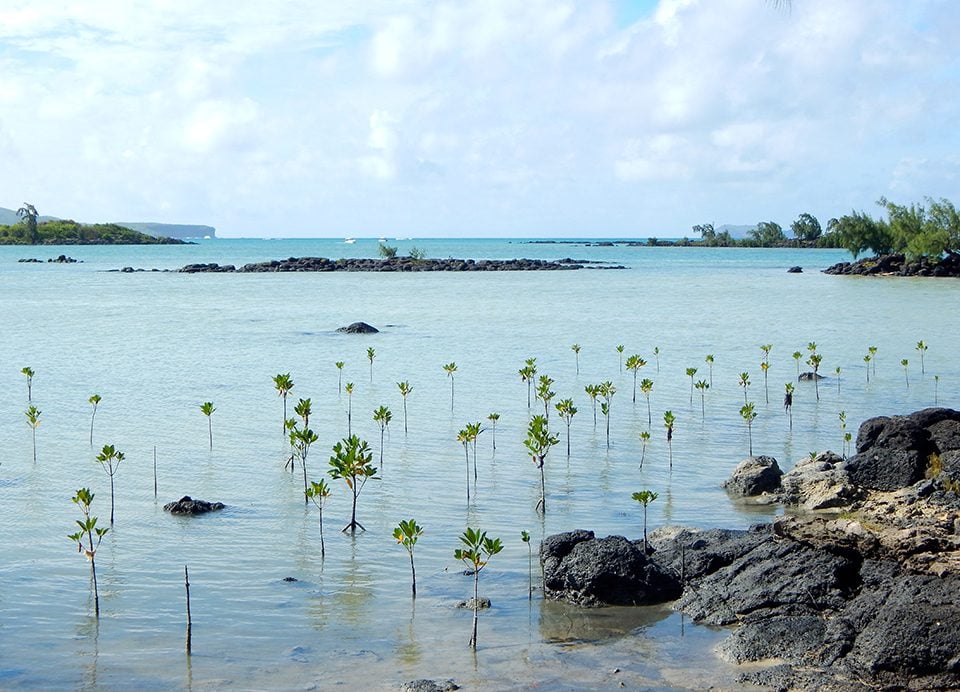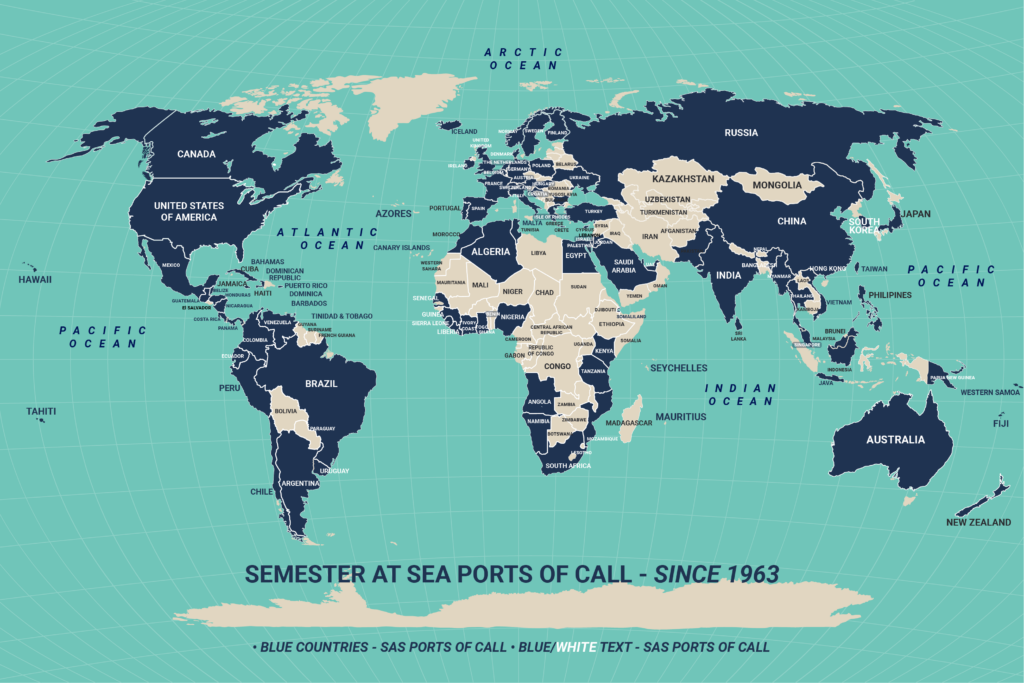
The island of Mauritius provided students aboard the MV Explorer a sense of excitement to soak up all that the first port in Africa had to offer. That morning, section one of Dr. Ann Gargett‘s Introduction to Oceanography class set out from Port Louis towards the western side of the island to Grand Sable. At the local community center, students met with members of The Grand-Sable Women Planters Farmers Entrepreneurs Association (GSWPFEA) to learn about the efforts this organization is taking to  restore the island’s natural habitat through mangrove restoration. This organization’s membership is made up entirely of local women who strive to educate the community, through mangrove tree restoration, regarding the issues that have caused destruction to the marine habitat along the island’s coastlines.
restore the island’s natural habitat through mangrove restoration. This organization’s membership is made up entirely of local women who strive to educate the community, through mangrove tree restoration, regarding the issues that have caused destruction to the marine habitat along the island’s coastlines.
Melody Jacobs, from the University of Virginia, discussed meeting the women of this advantageous organization, “Many of the women of the GSWPFEA are housewives that used to have to choose between their children and work. The GSWPFEA made it possible, that not only could they arrange their schedules to work around the hours that their children attended school, but also make enough profit to cover the school expenses and give back to the community through planting of vetiver and lemon grass to stabilize the soil as well as for handicraft purposes.”

These influential women work with the Global Environment Facility Small Grants Programme implemented by the United Nations Development Program to educate the community about the importance of protecting the beaches and their environment. While speaking with the organization’s members, students learned about their mangrove sensitization projects and seaweed cultivation efforts.
Throughout the course students have learned that, “mangrove trees and coral provide structural complexity to near shore marine habitat, allowing the co-existence of diverse species assemblages. When that structure is damaged or removed, these ecosystems can collapse.” This field lab was designed to highlight the conservation efforts taking place around the island.
Next, the class headed north to visit the Marine Resource Centre and Mini Lab Nauticaz at the Blu Marine Hotel in Anse La Raie. Here, students talked with members of Reef Conservation who research the causes of habitat devastation in Mauritius, which is a project that GEF has also supported. The organization aims to restore the island’s coral reefs, and focuses on educating the public about the causes and effects that humans have on the environment.

After discussing the vital responsibility we have to protect the environment and the Reef Conservation’s efforts to guard the coasts, students then had the opportunity to help plant mangrove trees.
Semester at Sea students were eager to study the island and understand some of the challenges that it’s facing. A student at Colorado State University, Christine Zirbel, disclosed that throughout the day she “discovered the different ways that the mangroves and coral reefs are being destroyed.” Zirbel also reflected on the course’s impression, “I think that this field lab helped our class think about what kind of an impact humans are leaving on the environment.”



